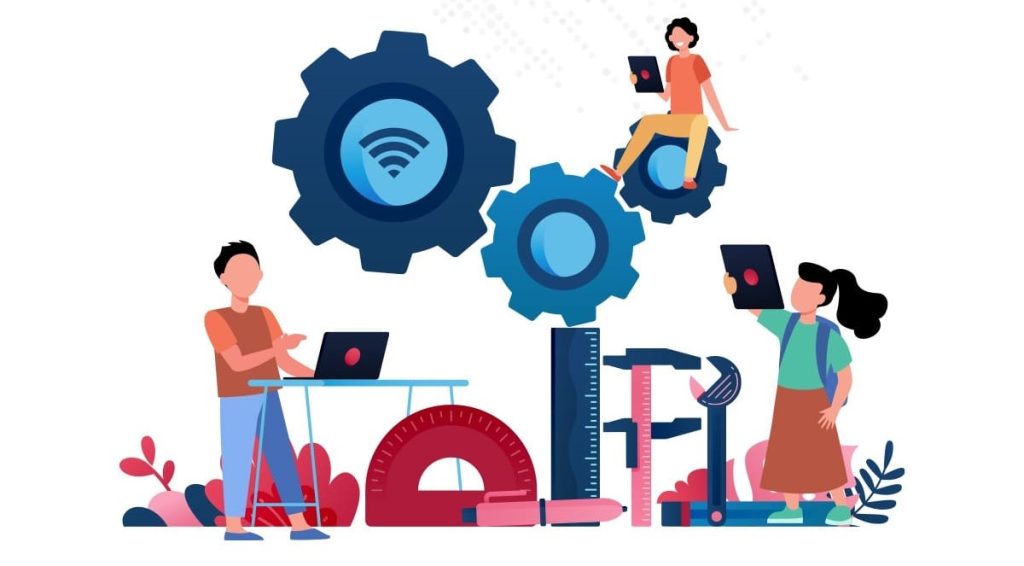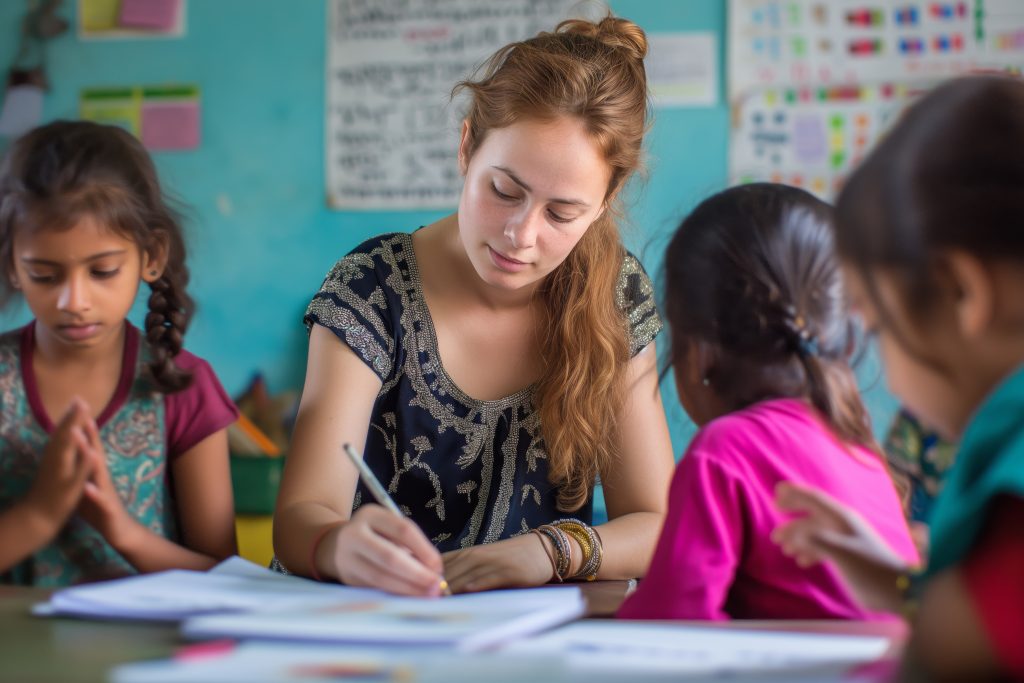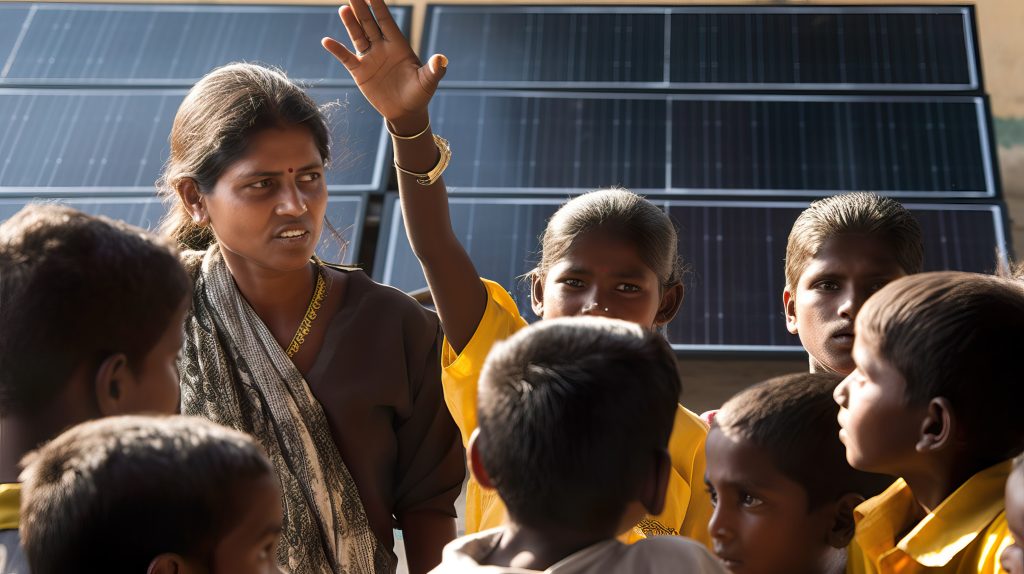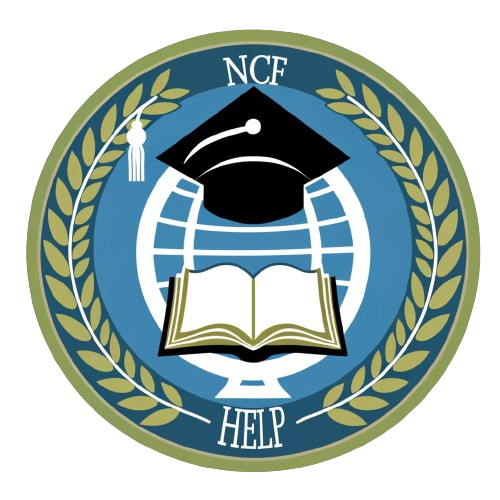Holistic Approach to Education and Vocational Education
The landscape of education is undergoing a crucial transformation, with a growing emphasis on equipping students with not just theoretical knowledge, but also practical skills relevant to the workforce. This shift is being driven by national curriculum frameworks (NCF) that integrate vocational education into mainstream schooling. The National Curriculum Framework (NCF) serves as a blueprint for educational reforms in India. Developed by the National Council of Educational Research and Training (NCERT), the NCF outlines the learning objectives, content areas, pedagogy, and assessment strategies for various school stages. The most recent NCF, launched in 2021 alongside the National Education Policy (NEP) 2020, marks a significant departure from traditional approaches. It emphasizes a “holistic approach to education,” focusing on developing critical thinking, problem-solving skills, and lifelong learning competencies alongside subject-specific knowledge (National Education Policy 2020). This shift aligns with global trends in education, where countries are recognizing the limitations of purely academic curricula. As the World Economic Forum emphasizes, education systems “need to equip individuals with the skills they need to thrive in the 21st century workplace,” which includes a blend of technical and soft skills (On the Agenda / Education and Skills | World Economic Forum).
Vocational education, also known as career and technical education (CTE), equips students with the specific skills and knowledge needed for particular professions or trades. It can encompass a wide range of fields, from carpentry and auto mechanics to healthcare and information technology. Vocational training programs often involve a combination of classroom learning with hands-on experience in workshops, labs, or on-the-job training. The importance of vocational education cannot be overstated. In today’s rapidly evolving job market, there’s a growing demand for skilled workers across various sectors. A 2018 report by the World Bank found that “skills gaps are a major constraint to economic growth and job creation” (World Development Report 2019: The Changing Nature of Work). By equipping students with relevant skills, vocational education can bridge this gap and prepare them for successful careers.
Historical Look at NCF and Vocational Education in India
The National Curriculum Framework (NCF) in India is undergoing a metamorphosis, paving the way for a more prominent role for vocational education. To understand this shift, we need to delve into the historical context of both the NCF and vocational education in the country. The NCF serves as a guiding document for educational reforms, outlining the learning objectives, content areas, pedagogy, and assessment strategies for schools. Developed by the National Council of Educational Research and Training (NCERT), the NCF has undergone several revisions since its inception.
Earlier versions, particularly those implemented after independence, focused on building a national identity and fostering democratic values. The emphasis was on rote learning and memorization of factual knowledge. However, as India’s socio-economic landscape evolved, the need for a more dynamic and skill-oriented curriculum became increasingly evident. The NCF 2005, for instance, acknowledged the limitations of a purely content-driven approach and advocated for a shift towards “developing competencies” and “lifelong learning skills” (National Curriculum Framework 2005). This trend culminated in the most recent NCF launched alongside the National Education Policy (NEP) 2020. The NEP emphasizes a “holistic approach to education,” integrating vocational skills with traditional academic disciplines (National Education Policy 2020).
Vocational education in India has had a somewhat checkered past. Traditionally, it was viewed as an alternative for students who couldn’t succeed in mainstream academics. Vocational training programs were often siloed, with limited integration with the general education system. This perception and lack of proper integration resulted in lower social status associated with vocational education. Despite various initiatives like the ITIs (Industrial Training Institutes) and Polytechnics, vocational education struggled to gain traction. These programs often focused on outdated skills or lacked strong industry linkages, making them less attractive to students seeking employable skills.
The growing demand for skilled workers across various sectors has highlighted the limitations of the traditional education system. A 2018 World Bank report emphasizes the need for education systems to equip individuals with the skills needed to thrive in the 21st-century workplace (World Development Report 2019: The Changing Nature of Work). This includes a crucial need for vocational skills alongside a strong academic foundation. Furthermore, youth unemployment continues to be a major challenge in India. Vocational education can provide alternative pathways to success, empowering young people with the skills needed to secure jobs and contribute to the economy.

Implementation Strategies for Vocational Education in the NCF
The National Curriculum Framework’s (NCF) shift towards integrating vocational education presents exciting possibilities for India’s youth. However, this transformation hinges on effective implementation strategies. Here, we explore key initiatives that can pave the way for a successful vocational education ecosystem.
- National Education Policy (NEP) 2020: This landmark policy emphasizes the integration of vocational education with mainstream schooling from secondary levels onwards. It proposes a 50% target for students to have exposure to vocational education by 2025, aiming to create a more flexible and holistic learning experience (National Education Policy 2020).
- Skill India Mission: Launched in 2015, this mission aims to create a skilled workforce across various sectors. It offers a range of vocational training programs under the Pradhan Mantri Kaushal Vikas Yojana (PMKVY) scheme, with a focus on industry-relevant skill development.
- Samagra Shiksha: This centrally sponsored scheme aims to improve school education from pre-primary to Class 12. One of its key components is the “Scheme of Vocationalisation of School Education,” which provides vocational training opportunities within the school system.
- Collaboration: A Tripartite Approach: Successful implementation of vocational education necessitates collaboration between:
- Government: Government agencies can provide policy frameworks, allocate funds, and establish robust quality assurance mechanisms for vocational training programs.
- Industry: Industry participation is crucial for ensuring that the skills taught are relevant to current job market needs. Collaboration can involve industry experts developing curriculum modules, providing internship opportunities for students, or participating in skill assessments.
- Educational Institutions: Schools, colleges, and vocational training institutions need to adapt their infrastructure and teaching methods to integrate vocational elements. This includes establishing workshops, labs, and partnerships with industry for mentorship and practical training opportunities.
Policy Initiatives Supporting Vocational Education:
A successful example of this collaboration is the “Skill Hubs Initiative” launched under the PMKVY 3.0 scheme. These hubs connect schools and training institutions with industries, allowing students to access industry-relevant skills training (Government has taken several steps to provide Vocational Education to the youth).
- Training Teachers for a New Era: Integrating vocational education requires a skilled teaching workforce. Here’s how to achieve this:
- Teacher Training Programs : Training programs should equip teachers with the necessary pedagogical skills to deliver vocational content effectively. This could involve courses on activity-based learning, industry collaboration, and assessment strategies for practical skills.
- Skill Development for Teachers: Teachers themselves may require upskilling or reskilling to teach specific vocational trades. Programs can be designed to bridge any skill gaps and ensure teachers possess the necessary expertise.
- Mentorship and Knowledge Sharing: Mentorship programs connecting experienced vocational trainers with teachers can be highly beneficial. Additionally, creating platforms for teachers to share best practices and innovative teaching methods can further enhance vocational education delivery.
Effectively implementing vocational education within the NCF framework requires a multi-pronged approach. Policy initiatives, industry collaboration, and robust teacher training programs are crucial for building a skilled workforce and empowering young people with relevant skills for the future. By working together, stakeholders can turn the promise of the NCF into a reality, shaping a brighter future for Indian youth and the nation’s economy.

The Impact of Vocational Education in the NCF
The integration of vocational education within the National Curriculum Framework (NCF) holds immense potential for students and the Indian economy.
Enhanced Employability: Equipping students with industry-relevant skills through vocational training programs significantly improves their employability rate. A study by the World Bank highlights the positive correlation between vocational training and higher employment opportunities (World Development Report 2019: The Changing Nature of Work).
Alignment with Industry Needs: By fostering collaboration with industry, vocational education can ensure the skills taught are aligned with current job market demands. This leads to a more skilled workforce, boosting productivity and contributing to national economic growth (On the Agenda / Education and Skills | World Economic Forum).
Diversification of Career Options: The NCF’s framework breaks down the traditional academic-only path, allowing students to explore diverse career options. Exposure to vocational fields at an early age can help them identify their talents and interests, leading to more fulfilling career choices.
Challenges and Limitations of Integrating Vocational Education in the NCF
Traditional education systems can be resistant to incorporating new approaches. Teachers accustomed to rote learning methods may require significant training to effectively deliver vocational content (Comparative Analysis of Education Systems of India and Germany – IJFMR). Effectively implementing vocational education requires resources for infrastructure development, such as workshops, labs, and specialized equipment. Furthermore, training teachers and establishing robust industry partnerships necessitate adequate funding, which may be a challenge (Vocational Education In India – Objectives, Benefits & Importance). A lingering perception exists that vocational education is a secondary option for academically weaker students. Changing this mindset requires awareness campaigns that highlight the value and growing importance of vocational skills in the job market (On the Agenda / Education and Skills | World Economic Forum).
Case Studies and Examples of NCF and Vocational Education
While in-depth studies on the impact of the recent NCF integration with vocational education in India are still emerging, we can explore relevant case studies from India and globally to understand the potential outcomes.
India:
- Skill India Mission (2015): This government initiative offers various vocational training programs under the Pradhan Mantri Kaushal Vikas Yojana (PMKVY) scheme. These programs focus on industry-aligned skills, with reported success in improving youth employability (PMKVY). However, challenges remain in ensuring quality and consistency across training providers.
- Samagra Shiksha’s Scheme of Vocationalisation of School Education: Launched within the national school education program, this scheme provides vocational training opportunities within schools. Early evaluations suggest increased student engagement and exploration of diverse career paths. Long-term impact assessment on skill development and job placement is needed.
Global Examples:
- Germany’s Dual System: This renowned model combines classroom learning with apprenticeships in companies. Students gain both theoretical knowledge and practical skills, leading to high completion rates and a skilled workforce contributing significantly to Germany’s economy (New report calls for reforms to improve technical and vocational training in developing countries | World Economic Forum).
- Singapore’s SkillsFuture Initiative: This program offers a diverse range of vocational training pathways catering to individuals of all ages and skill levels. It allows for upskilling and reskilling throughout careers, fostering adaptability in a rapidly changing job market (SkillsFuture Singapore).
- Australia’s VET in Schools Program: This program integrates vocational training options into secondary education. Students can earn industry-recognized certifications alongside their academic studies, increasing their employability after graduation (Overview of vocational education and training).

Additional Global Cases Highlighting Specific Sectors:
- Finland’s Integration of Vocational Education: Finland’s education system seamlessly blends general and vocational education, allowing students to choose specialized pathways within high school. This approach is credited with fostering a strong culture of innovation and entrepreneurship (Education and Training Monitor 2022).
- Netherlands’ Focus on Work-Based Learning: The Dutch system emphasizes practical learning experiences through internships and work placements within vocational training programs. This ensures graduates possess the skills employers actively seek (Education system the Netherlands | Nuffic).
- South Korea’s Investment in STEM Skills: South Korea’s vocational education system prioritizes Science, Technology, Engineering, and Mathematics (STEM) skills, preparing students for jobs in high-tech industries. This targeted approach contributes to the nation’s position as a global leader in technology (Korea TESOL Journal | KoreaTESOL).
- Kenya’s Competency-Based Training (CBT) Model: Kenya’s system focuses on acquiring specific skills relevant to job requirements. This competency-based approach ensures graduates are prepared for immediate employment in their chosen fields (Competency-based Education and Training (CBET) in Kenya: Policies, Opportunities and Challenges | Alternation).
- Rwanda’s Focus on Green Jobs: Rwanda’s vocational training programs increasingly incorporate training in areas like renewable energy and sustainable agriculture. This equips graduates with skills that contribute to environmental sustainability while creating new employment opportunities (Jobs | Green Policy Platform).
These case studies showcase diverse approaches to vocational education. While some focus on broad skill development, others specialize in specific sectors based on national priorities. India’s evolving NCF framework can learn from successful aspects of these models while adapting them to its unique context.
Future Directions for Vocational Education in the NCF
The National Curriculum Framework’s (NCF) integration of vocational education is a positive step, but the journey doesn’t end here. The NCF needs to be a living document that adapts to the dynamic needs of the job market. Regular reviews and consultations with industry experts can ensure the vocational skills taught remain relevant. Furthermore, the NCF can incorporate emerging pedagogical approaches like project-based learning and online learning platforms. This can make vocational education more engaging and accessible for students (On the Agenda / Education and Skills | World Economic Forum). For the NCF to truly empower young minds, it needs to reach marginalized communities who often have limited access to quality education. This can be achieved through:
- Targeted Outreach Programs: Initiatives can be designed to inform students and parents in rural and underserved areas about the benefits of vocational education.
- Scholarship and Financial Aid: Financial assistance can help bridge the gap for students from economically disadvantaged backgrounds who may not be able to afford vocational training.
- Mobile Training Units: Equipping mobile training units with necessary equipment can bring vocational training directly to remote communities, making it more accessible.
By expanding access, the NCF can ensure that the benefits of vocational education reach all sections of Indian society.

Integrating Emerging Technologies
The job market is constantly evolving, driven by advancements in technology and automation. The NCF’s vocational education framework needs to keep pace by incorporating training in basic digital literacy and training in areas like data analytics, coding, and online collaboration tools will be crucial for future careers. As sustainability becomes a top priority, vocational training in renewable energy, energy efficiency, and environmental management will be in high demand. Exposure to technologies like artificial intelligence, robotics, and 3D printing can prepare students for the jobs of tomorrow. By integrating these emerging fields, the NCF can ensure that vocational education equips students with the skills they need to not just survive, but thrive, in the future workplace.
Conclusion: Building the Future & A Call to Action for Vocational Education
The integration of vocational education into the National Curriculum Framework (NCF) signifies a pivotal moment in India’s educational landscape. By merging industry-relevant skills with academic knowledge, the NCF enables students to not only excel in the job market but also make significant contributions to the nation’s economic advancement. However, unlocking the NCF’s full potential necessitates a collaborative endeavor from all stakeholders. The government must continue to offer policy support, increase funding for infrastructure and teacher training, and implement robust quality assurance measures to ensure effective execution. Industry players must actively engage with educational institutions through initiatives like internships, guest lectures, and curriculum development to ensure the relevance of skills taught. Educational institutions, in turn, must adapt teaching methodologies, forge partnerships with industries, and foster an environment that values both academic and vocational learning. Investing in vocational education is tantamount to investing in India’s future prosperity. Through collective action, we can establish a more inclusive and skill-oriented education system that equips every young mind with the necessary tools to thrive in the 21st century.


Comments
4 responses to “Harmonizing Academia and Industry: The Evolution of National Curriculum Framework (NCF) Towards Vocational Education”
Very informative article! !
Looking forward to many more such articles from the author!
Thank you mam!
A must read article for all educators. Very informative and exhaustive article covering all aspect of NCF and focussing the importance of vocational skill.
Also the article makes one aware of educational framework of other countries.
Yes I do agree the mindset of the educators need to change
It’s great to know that the insights into the educational frameworks of other countries resonated with you as well. Thank you for taking the time to share your thoughts and for emphasizing the importance of evolving mindsets in education. Indeed, India is definitely moving in the right direction towards these educational reforms. Your feedback is greatly appreciated!